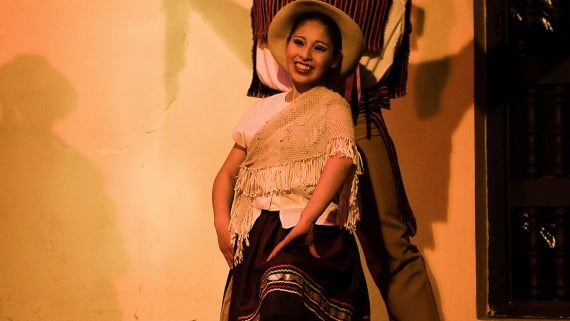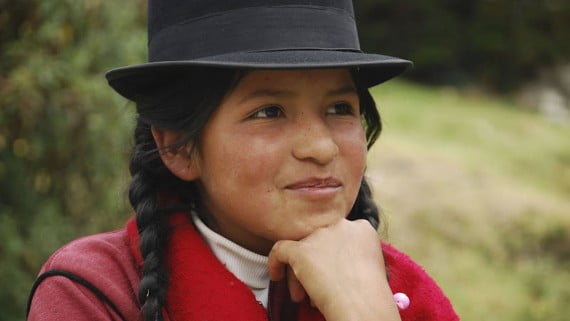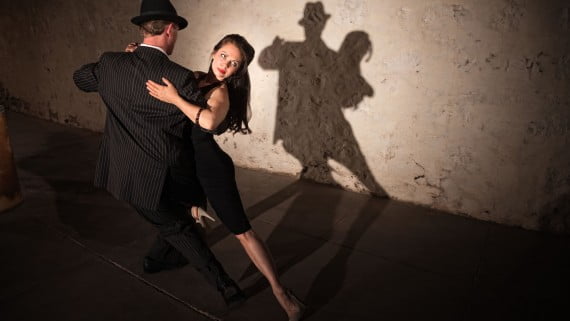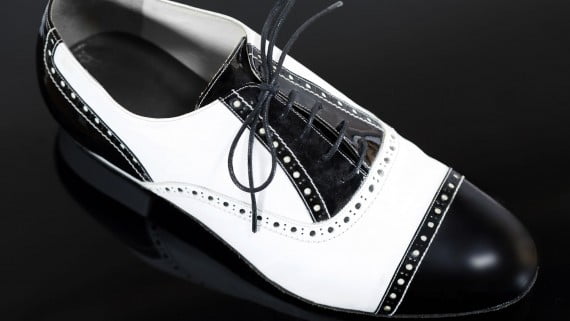The typical costumes of Argentina express their folklore, in which traditional dances, dances and musical genres have a very important role, since most costumes are related to some of them. In what follows we mention the most popular costumes and accessories in this country.
Below you have an index with all the points that we are going to deal with in this article.
Article Index
- 1.
- 2.
- 3.
- 4.
- 4.1.
- 4.2.
- 5.
Gaucho
The most representative costume of Argentine folklore is that of the gaucho, both in its male and female versions. The use of the term gaucho goes back to the colonial period and there are several theories about it.
On the one hand, it is thought that it may come from the word of the Quechua language wow, Meaning orphan, tramp and it was becoming the term that is used today because of the pronunciation that the Spanish gave it.
Another theory is that which relates the word to the word Bye bye of Arabic origin and what does it mean animal herder.
In either case, it is understood by gaucho un cowboy type semi-nomadic native of the plains and areas near Argentina, as well as some regions of Uruguay, Paraguay, the Bolivian Chaco and southern Brazil.
The figure of the gaucho emerged in Argentina around 1600, after the Spanish brought the horse to the New World. Originally, he was a lonely, free-spirited person with few possessions beyond his horse.
To this day, the figure of the gaucho continues to occupy a very important place in Argentine folklore, especially in the agrarian sector, whose men continue to wear this outfit.
The classic men's Argentine gaucho costume combines totally black pants with a white shirt and, on top of it, an open short-sleeved jacket. These garments form the basis of this outfit, which includes a series of accessories that will be key for the costume to really be considered gaucho.
Undoubtedly, the star accessory is a red scarf tied with a knot frontally, that is, around the neck. Other important details are a brown sash and boots, which always go over the pants. Finally, this costume also includes a kind of characteristic reddish beret.
Countrywoman
The gaucho costume also has its version for women, in which case it is called China (this term derived from Quechua, which means girl o female), countrywoman, sheath, gaucho y garment. Of all of them, possibly the most commonly used is that of countrywoman.
Gaucho women, in their origins, occupied the role of accompanying the gaucho and, therefore, their traditional clothing had to be characterized by its simplicity, as well as men's clothing.
Thus, the civilian costume consists of a semi-flat skirt without petticoat (skirt that is put under the main skirt as an underwear) and a kind of long-sleeved camisole that reaches the height of the neck.
As for footwear, women use espadrilles as a symbol of his honesty. Finally, the traditional hairstyle is two side braids that fall on both sides of the shoulders.
Currently, Argentine gaucho and country costumes can be seen in all their splendor in the Tradition Week Argentina, during which the Day of Tradition is celebrated, which takes place every November 10.
During this festival you can see various parades and parades in different regions of Argentina, among which those of Córdoba stand out. It is also common that during these parties contests are held to award the best costume.
Much of these celebrations take place thanks to the Argentine Gaucho Confederation, which ensures the preservation of gaucho traditions, of which their costumes are undoubtedly part.
The kollas
Within communities indigenous people of South AmericaArgentina is one of the countries that conserves the most native peoples, of which their traditions and customs have survived, among them, the typical clothing.
Within this country, the clothing of the Kolla tribe stands out, which are an indigenous people that inhabit the Norte Chico of Chile, the north of Argentina and Bolivia. Their origin dates back to the XNUMXth century and, according to data collected by experts, they originally lived around Lake Titicaca, located in Bolivia.
Currently, according to data collected in the Argentine and Chilean census, the largest Kolla community inhabits the Argentine territory, specifically Salta, Tucumán, Jujuy and Buenos Aires.
Thus, their culture is widely extended, a fact that can be seen reflected in their typical clothing, within which the women's suit stands out above all, which is quite similar to the civilian suit of which we have spoken previously.
El kolla women suit He is red, with a black hat and two side braids that fall on his shoulders. In general, it stands out because it brings together the basic characteristics of the typical highland costumes.
The collas' suits are very warm mainly due to the low temperatures that are reached in the areas where they reside, especially at night, which can be below 0 ° C. It is also common for the outfit to include a wool poncho, similar to the one used in the typical costumes of the Andean Region.
Dances and dances
The dances and typical dances of Argentina are part of the folklore of that country and are derived from the wide variety of musical genres present in Argentina.
There are many typical dances, each one with its corresponding attire, but, without a doubt, the quintessential Argentine dance is tango, which has been around the world and is practiced in various countries. In what follows we explain what the tango dress consists of, known as tango costume, and that of the Argentine chacarera dance.
Tango
Tango is, at the same time, a musical genre and a type of dance original from Argentina and especially popular in the region of River Plate y Buenos Aires, as well as in Montevideo (Uruguay). Tango dates back to the late nineteenth century as a result of a fusion between the Rio de la Plata, African, Italian, Hispanic and indigenous cultures.
Tango is a Sensual dance It is danced as a couple and, therefore, the traditional costume used for this dance is equally sensual. The feminine outfit stands out, which consists of a dress that is usually red, although it can also be black, with a side opening on one side, so that one of the legs is semi-exposed.
Although it is usually a short dress, there is also a longer version. Under the dress, transparent, semi-transparent black or mesh stockings are usually worn. The shoes are always high heels.
As for male tango clothing, it always consists of a suit, which can be totally black or black with fine white stripes. Under the suit, the tango He wears a white shirt, on top of which a tie or bow can optionally be included, and the black hat is never missing. The fundamental thing is that the masculine attire transmits an elegant and, at the same time, manly image.
Chacarera dance
The chacarera dance is a original flokloric dance from Argentina, specifically in the province of Santiago del Estero, although, to this day, it has spread throughout Argentina and even a part of Bolivia (Chaco region). This dance has its own music, which is played with guitar, bass drum and violin, although since the XNUMXth century, varied instrumental formations have been added.
This dance runs in pairs within a group of several pairs and has a free rhythm, although coordination with the rest of the pairs that make up the group must be maintained. However, the basic steps of this dance consist of round and round.
The women's suit consists of a long puffer skirt usually black or dark in color. The upper part consists of a gray or white shirt with a high neck, over which a kind of jacket characteristic of this suit is placed. Finally, the woman places a comb in her hair.
As for the man, he wears baggy pants, that is, wide and tight at the waist. At the top, he wears a white button-down shirt and, over it, a jacket. The hat is never missing, which usually matches the color of the jacket.
Carnival
The Carnival celebrations in Argentina stand out precisely for their typical costumes. Especially striking is the Carnival of Corrientes, region located on the Argentine coast and considered as the National Capital of Carnival, and the Carnival of the northwest, in the regions of Jujuy and Salta.
The carnival of the Argentine coast (Corrientes and Entre Ríos) is very similar to the Brazilian carnival, since it combines costumes, parades and street parties, especially at night. The costumes of these parades are characterized by including fantasy motifs, usually made with sparkling stones, sequins, feathers and beads, among other materials.
As for the carnival festivals in northern Argentina, these are markedly different from those on the coast, mainly because their typical costumes are inspired by the Inca ancestral customs, at the same time that they have been mixed with current elements.
This article has been shared 190 times. We have spent many hours collecting this information. If you liked it, share it, please:









